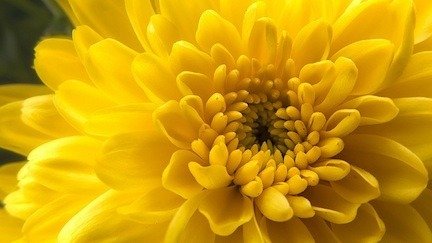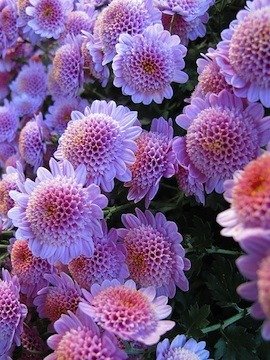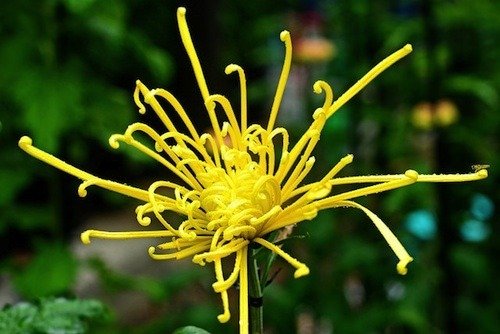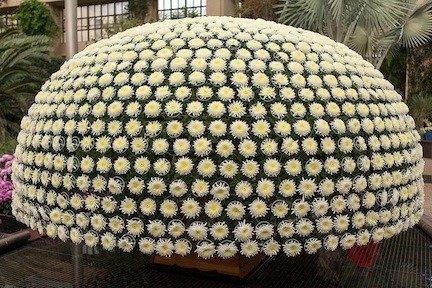





Reflecting the spicy scents and mellow colors of autumn, chrysanthemums are a beloved component of the fall landscape. Introduced to the new world during colonial times, the mum now reigns as one of America's favorite flowers.
An Honored History
Mentioned in the writings of Confucius, the chrysanthemum stands as one of the most revered plants in the Asian world. In China, the species has a long history as a culinary herb, useful in making salads and teas.
Together with the orchid, the bamboo and the plum blossom, chrysanthemum is also honored as one of the “Four Gentlemen” or “Four Noble Ones” of traditional Chinese art. This horticultural quartet depicts the beauty of the changing seasons, with the chrysanthemum representing autumn.
So prized by the Japanese that it came to adorn the emperor’s imperial crest, the “kiku” or chrysanthemum is today that country’s national flower. During the ninth day of the ninth month, Japan celebrates Kiku no Sekku, or Chrysanthemum Day.
In modern times, chrysanthemum serves as the birth flower for November, as well as the floral symbol for the 13th wedding anniversary. Chrysanthemums in Europe and America
Chrysanthemums in Europe and America
Chrysanthemums reached Europe in the 17th century, and traveled to North America with the first colonists. Many find the plant’s English moniker to be a bit of a tongue twister. Bestowed by Swedish botanist Karl Linnaeus, the name is a combination of the Greek “chrys” (golden) and “anthemom” (flower).
Symbolism
In some European countries, such as Belgium, France, Italy, Spain, Poland and Hungary, the incurved varieties of mums are regarded primarily as a graveside memorial. Even in the Asian countries where the species is generally thought of as a symbol of life, white mums are associated with grief.
primarily as a graveside memorial. Even in the Asian countries where the species is generally thought of as a symbol of life, white mums are associated with grief.
Chrysanthemums connote a much more positive message in America, where they betoken honesty, optimism and long life. Different colors conveyed slight variations in the Victorian language of flowers, with a red mum representing love; white, loyalty and truthfulness; yellow, slighted love.
This flower is also a sentimental favorite of many because of its association with corsages for fall sport events and school dances. Such “football” mums feature impressively large incurving blooms and are specially grown by florists for size, shape and color.
Breeding and Types
A member of the Asteraceae or daisy family, chrysanthemum counts among its relatives the aster, coneflower and zinnia, and like them features a complex flower structure. Although a chrysanthemum appears to be one large bloom, its head is actually composed of numerous small florets.  The mum’s combination of disk and ray flowers has allowed plant breeders to create a variety of showy and sophisticated forms. Modern classification of the species includes incurved, reflexed, pompon, anemone, spoon, quill and spider types. Gardeners can choose from numerous mum colors beyond the traditional yellow. Bronze, pink, magenta, lavender, orange and white, as well as bi-colored specimens, are also available.
The mum’s combination of disk and ray flowers has allowed plant breeders to create a variety of showy and sophisticated forms. Modern classification of the species includes incurved, reflexed, pompon, anemone, spoon, quill and spider types. Gardeners can choose from numerous mum colors beyond the traditional yellow. Bronze, pink, magenta, lavender, orange and white, as well as bi-colored specimens, are also available.
Until relatively recently, mums were thought of only as a seasonal flower. During the 1930s and 1940s, breeders discovered that the plant’s flowering could be manipulated by the amount of daylight it received. Using artificial lighting to simulate the shorter days of autumn, florists found they could force bloom throughout the year.
Plant of a Thousand Blooms
As a highlight of its annual Chrysanthemum Festival, Pennsylvania’s Longwood Gardens creates and displays a “Thousand Bloom Mum”. Advertised as the largest such specimen grown outside of Asia, this painstakingly nurtured plant is bedecked with over 1,500 uniform blossoms.
Copyright © www.100flowers.win Botanic Garden All Rights Reserved